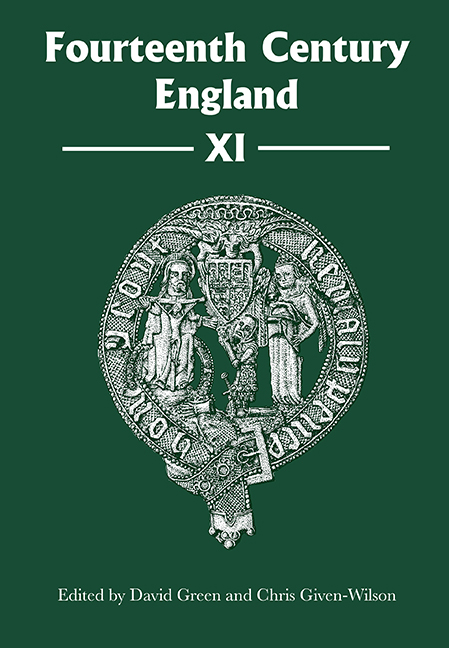Book contents
- Frontmatter
- Contents
- List of Illustrations
- List of Contributors
- Preface
- Abbreviations
- The Evolution of Edward I's ‘Historical’ Claim to Overlordship of Scotland, 1291–1301
- Prelates and Political Reform: The Bishops and the Ordinances of 1311
- Sir Robert de Wateville (d. 1330) of Essex and the Younger Despenser, 1322–6
- Memory, Genealogy and Nationality in Plantagenet England: The Plugenet and Walerand Estates, 1265–1368
- The ‘Apparitional’ Magna Carta in the Long Fourteenth Century
- Family, Loyalty and the Royal Household in Fourteenth-Century England
- The Revolution Stops Here? Leicestershire and the Rebellion of 1381
- FOURTEENTH CENTURY ENGLAND ISSN 1471–3020
The Revolution Stops Here? Leicestershire and the Rebellion of 1381
Published online by Cambridge University Press: 14 September 2019
- Frontmatter
- Contents
- List of Illustrations
- List of Contributors
- Preface
- Abbreviations
- The Evolution of Edward I's ‘Historical’ Claim to Overlordship of Scotland, 1291–1301
- Prelates and Political Reform: The Bishops and the Ordinances of 1311
- Sir Robert de Wateville (d. 1330) of Essex and the Younger Despenser, 1322–6
- Memory, Genealogy and Nationality in Plantagenet England: The Plugenet and Walerand Estates, 1265–1368
- The ‘Apparitional’ Magna Carta in the Long Fourteenth Century
- Family, Loyalty and the Royal Household in Fourteenth-Century England
- The Revolution Stops Here? Leicestershire and the Rebellion of 1381
- FOURTEENTH CENTURY ENGLAND ISSN 1471–3020
Summary
Leicestershire has often been considered something of a backwater when it comes to the 1381 revolt. In most modern work on the rebellion, when the county is mentioned at all, it is usually only to note that, around 17 or 18 June, some 1,200 inhabitants of Leicester assembled south-east of the town at Gartree Hill. Once gathered, they prepared to repel insurgent peasants rumoured to be marching from the south, bent on destroying the Leicestershire possessions of their local lord, the duke of Lancaster, a well-known focus of rebel hatred. Though the confrontation between the townspeople and the rebels never came to pass, this brief drama remains our main impression of the part the town and the county played in the rising. Unsurprisingly, then, the events in Leicester and its environs have sat more comfortably in Lancastrian historiography, especially the life of John of Gaunt, than in that of the revolt per se. Aside from this non-event, only a couple of other disturbances in Leicestershire are mentioned in modern discussions of the revolt, and usually in quite dismissive language. Such commentaries almost always base their discussion of events in the county on Knighton's Chronicle, a source which, as we will see, has its weaknesses. In other words, due to an embedded historiographical tradition and the considerable reliance on one narrative source, most modern accounts of Leicestershire's connection with the Great Rising are generalized, shop worn and tell only a small part of the county's story.
Yet Leicestershire's neighbours did take part in the uprising, sometimes with considerable vigour. Northamptonshire and Cambridgeshire witnessed disturbances of varying degrees of severity, with Northampton, Cambridge, Ely and Peterborough all providing ‘stages for violent display’. Nonetheless, most of the Midlands has been written out of the modern history of the revolt. Over a century ago, Charles Oman made Lincolnshire, along with Leicestershire, a minor footnote in the events of 1381, and downgraded the situation in the county to ‘village ruffianism’, while also claiming that ‘The whole of the West Midlands, from Gloucestershire to Derby and Nottingham, seem to have been practically undisturbed by the insurrection.’ It was not for another eighty years, even with much publication for the revolt's 600th anniversary in the early 1980s, that the geography of the rebellion was substantially expanded to include Leicestershire's north-western neighbour, Derbyshire.
- Type
- Chapter
- Information
- Fourteenth Century England XI , pp. 155 - 182Publisher: Boydell & BrewerPrint publication year: 2019

